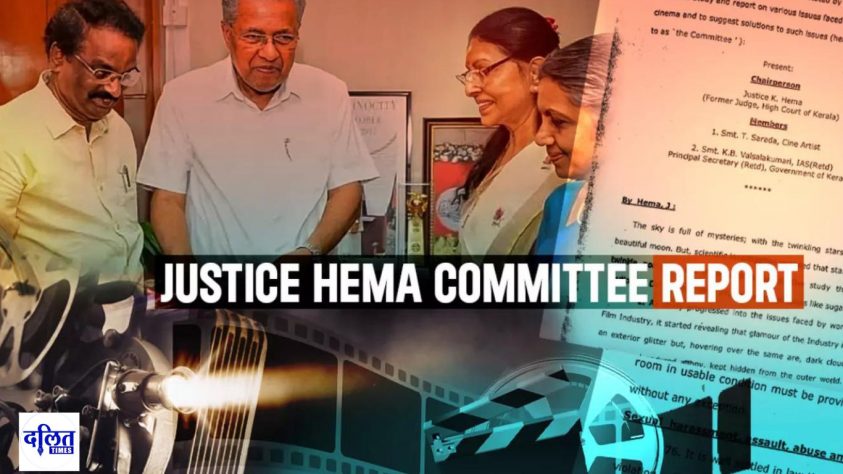The Malayalam film industry, once heralded for its artistic prowess and groundbreaking storytelling, has found itself embroiled in controversies over the past few years, exposing a darker side of the business. A major turning point in the battle against exploitation and harassment within the industry was the formation of the Hema Committee. This committee wast asked with investigating the deeply rooted issues of gender-based discrimination and sexual harassment within the Malayalam cinema space. The findings of the Hema Committee Report have shaken the industry and led to widespread conversations on the systemic rot within the film fraternity.
Also Read: Savitri Bai Phule: The First Woman Who Taught a Nation
The Formation of the Hema Committee
The Hema Committee was constituted by the Kerala government in July 2017 in the aftermath of a high-profile case involving the abduction and assault of a popular Malayalam actress. The incident sent shockwaves through the state and brought to light the unsafe working conditions for women in the industry. There was growing pressure from various quarters, particularly from the Women in Cinema Collective (WCC), to address these concerns seriously.
The government responded by establishing a three-member panel led by Justice K. Hema, a retired judge of the Kerala High Court. The other two members included veteran actor Sharada and former bureaucrat K.B. Valsalakumari. Their mandate was clear: investigate the allegations of sexual harassment, discrimination, and exploitation within the Malayalam film industry and suggest reforms to ensure a safer working environment for all, especially women.
The Revelations of the Hema Committee Report
The Hema Committee Report, which was submitted in December 2019, remained under wraps for a long time. The content of the report was not made public, leading to widespread speculation about the depth of the issues it uncovered. However, some leaks and testimonies from people associated with the investigation provided a glimpse into the grim reality.
The report revealed systemic exploitation, with many women in the industry facing harassment, both sexual and professional, from male colleagues and higher-ups. The environment in the film industry was described as highly patriarchal, with women often being sidelined or objectified. The lack of a proper redressal mechanism and the fear of ostracization deterred many women from coming forward with their complaints.
In particular, the report highlighted the power imbalance in the industry, where influential male actors, directors, and producers could easily manipulate and exploit women without facing any repercussions. Women who resisted advances or protested against harassment often found themselves blacklisted, with their careers facing abrupt roadblocks.
The committee’s investigation also exposed the complicity of film organizations, which often turned a blind eye to complaints or actively shielded perpetrators. Many female workers spoke about the toxic work environment, which included not just sexual harassment but also verbal abuse, lower pay, and the trivialization of their contributions to cinema.

Also Read: Mayawati Re-Elected as BSP President: A Renewed Push for Dalit Empowerment
The Aftermath and Criticism
Despite the significant findings, the report was met with controversy due to the delay in its release. Even after two years, the government had not publicly disclosed the report’s full contents, leading to outrage from activist groups like the WCC and the general public. The WCC, in particular, was vocal about the need for transparency and demanded that the report be made public so that the industry could take necessary corrective measures.
There was also criticism of the government’s inaction in implementing the committee’s recommendations. The slow pace of reforms, despite the shocking revelations, indicated a reluctance within the establishment to take on the powerful individuals in the industry. The public began to question whether the state was truly committed to safeguarding women in the industry or whether it was succumbing to pressure from influential figures.
Recommendations and Suggested Reforms
The Hema Committee made several recommendations to improve the working conditions in the Malayalam film industry. Some of the key suggestions included:
- Formation of a Grievance Redressal Cell: The report emphasized the need for a dedicated body to handle complaints of harassment and discrimination. This cell would operate independently, ensuring that victims could voice their concerns without fear of retaliation.
-
Mandatory Gender Sensitivity Workshops: To address the deeply ingrained patriarchal mindset, the committee recommended that all stakeholders in the industry undergo gender sensitivity training. This would help create awareness about appropriate behavior and promote equality.
-
Creating a Safe and Inclusive Workspace: The committee called for industry bodies to adopt policies that ensure safer workspaces for women. This included provisions for adequate lighting, security on sets, and regulations around working hours.
-
Equal Opportunities for Women: The report also pushed for better representation of women in key roles in the industry, including as directors, producers, and technicians. It called for equal pay for equal work, and the elimination of discriminatory practices based on gender.
A Larger Conversation on Gender and Power in Cinema
The Hema Committee Report has also sparked a broader conversation about the portrayal of women in Malayalam cinema. Critics have long argued that many Malayalam films perpetuate sexist stereotypes, reinforcing harmful gender norms. The report highlighted how these portrayals not only reflect but also reinforce the sexist attitudes prevalent in the industry.
The movement for change within Malayalam cinema is part of a global reckoning within the entertainment industry, akin to the #MeToo movement in Hollywood. Women in the industry are no longer willing to remain silent about the injustices they face, and many are demanding accountability and reforms.
Also Read: Who Is Meenakshi Bhagat? The 25-Year-Old BTech Grad Now a BSP Candidate
The Way Forward
The Hema Committee Report is a crucial step towards addressing the systemic issues of harassment and exploitation in the Malayalam film industry. However, real change will only come when the government, industry bodies, and influential figures commit to implementing the committee’s recommendations. Transparency is key, and the full contents of the report must be made public to ensure that there is widespread accountability.
More importantly, the industry must undergo a cultural shift, where respect for women and their contributions becomes the norm rather than the exception. Without such changes, the rot within the Malayalam film industry will continue to fester, and its reputation as a bastion of artistic integrity will remain tarnished.
As the movement for justice and equality gains momentum, the hope is that the Hema Committee Report will serve as a catalyst for lasting reform, ensuring that future generations of women in cinema can work without fear of harassment or discrimination.



